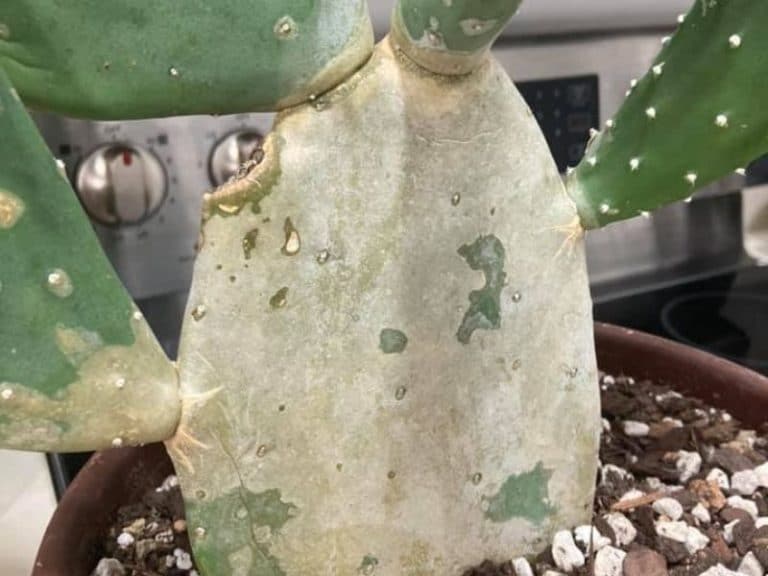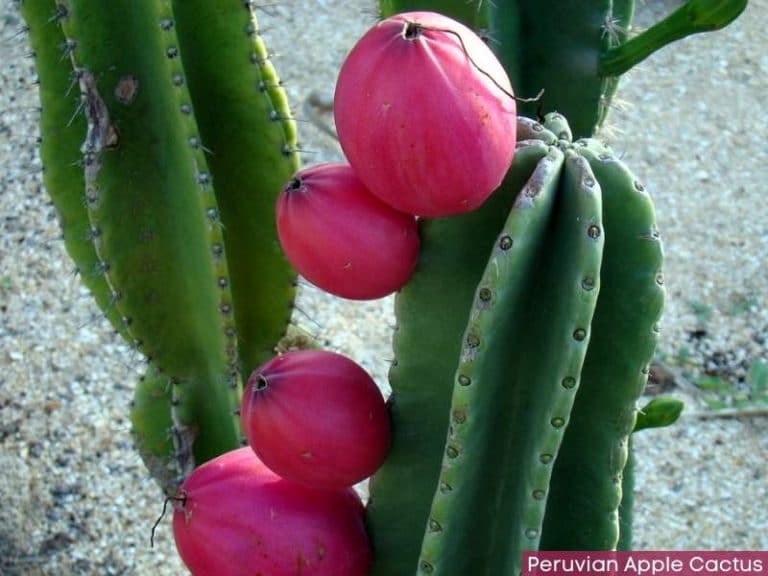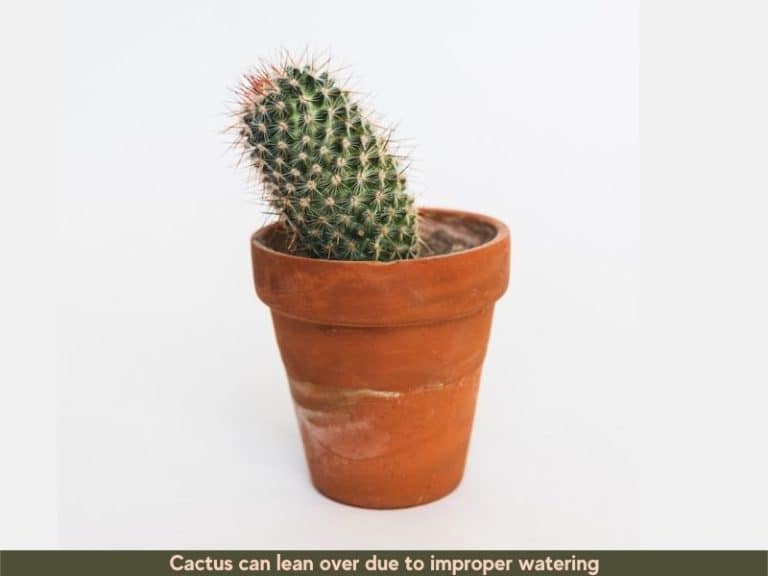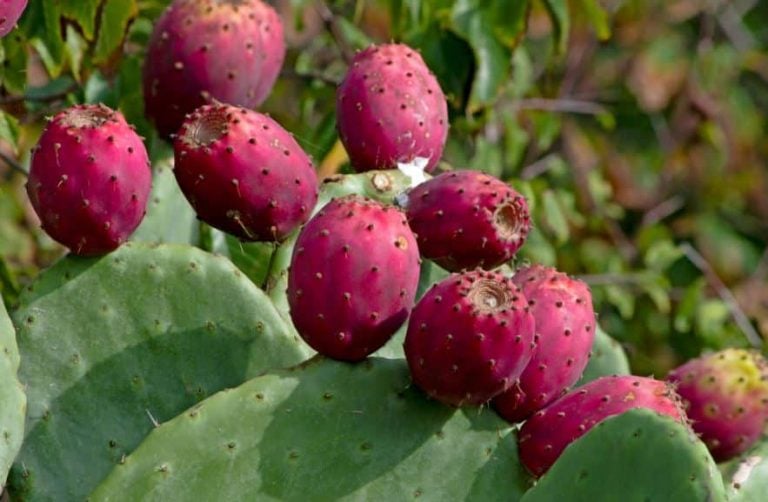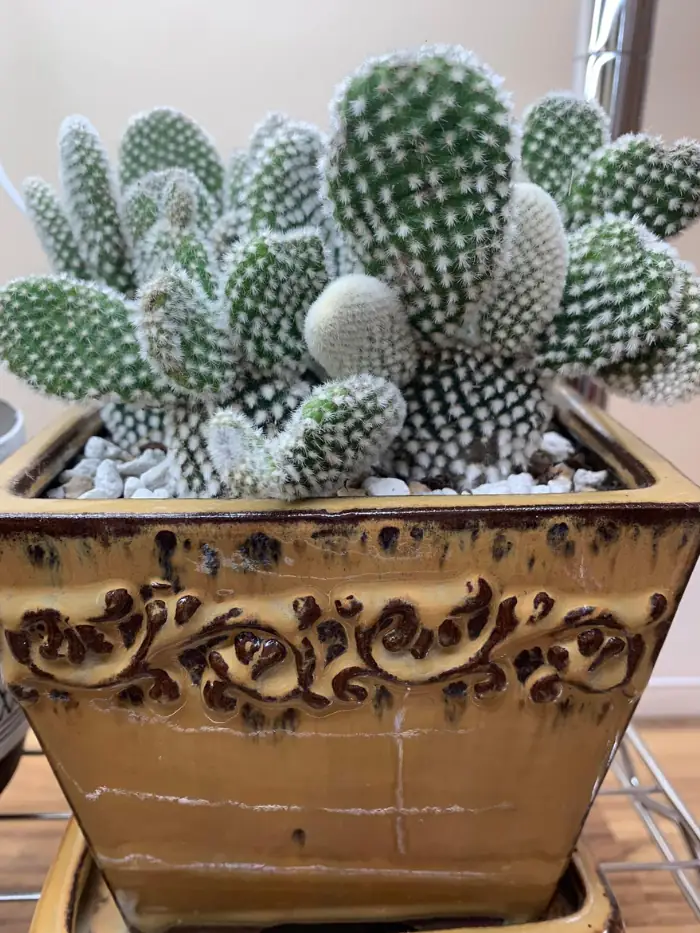How Do You Get Rid of Brown Spots on Cactus?
Brown spots are unattractive markings that have a variety of causes. The spots indicate poor plant health and can be detrimental to the aesthetics of your plant. Getting rid of some of these spots can be difficult especially if you don’t determine the actual cause to fix. So, what causes brown spots on cacti and how do you get rid of them?
Brown spots on cactus are mainly caused by sunburn, root rot disease, corking, or overwatering. To fix the discoloration, move the plant where it’ll get 4-12 hours of sunlight and allow the soil to dry out between waterings. Also, treat root rot with a fungicide if it’s the cause of the dark patches.
From my experience, brown patches on cacti can also arise if the succulent is too old. There may be no fix to this, but for the other causes, you might do something to save the plant and revive it.
What causes brown spots on cacti?
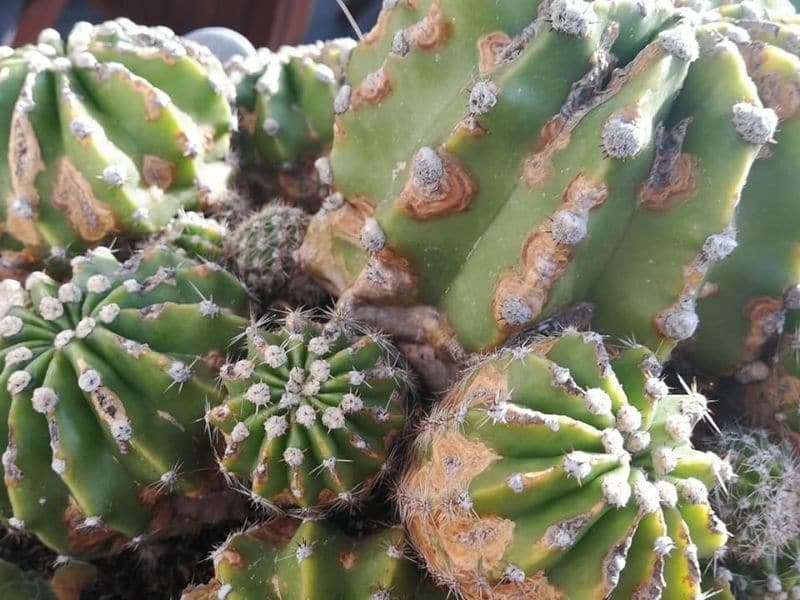
Some of the root causes of brown/black spots are environmental, poor maintenance, and natural factors.
Here are some of the reasons for brown spots on your cacti
- Overwatering
- Under-exposure or overexposure to sunlight
- Root rot
- Fungi such as Diplodia, Phyllosticta concava that lead to brown rust spots on cactus.
- Pest Infestation
- Corking – a natural aging process that leads to discoloration
- Animal damage by those animals that eat cactus.
- Hail and frost Damage
How to get rid of brown spots on cactus
Before you start treating your succulents, you want to make sure you identify the root cause of the discoloration. For example, browning that’s caused by sogginess in the pot can lead to root rot disease. If you fail to do the proper diagnosis, you’ll likely treat and fix a different problem altogether.
Here’s how to get rid of brown spots on your cactus:
1. Let the soil dry out between waterings
The first quick fix to brown spots on cactus is to adjust the watering schedule of your cactus to once a week or let the top 2-3 inches of soil in the pot dry out between waterings.
Cacti require watering about once every week during warm seasons and every 4 to 6 weeks during winter.
Succulents respond well to growing with minimal watering because they’re drought resistant. Cacti are sensitive to overwatering, which is a major problem when the succulent is primarily grown indoors.
Excessive humidity can adversely affect the health of your cactus plant, causing root rot and browning foliage.
2. Use a cactus soil mix for improved drainage
You might also have to consider the impact of the plant’s potting medium on the health of your plant. Most cactus species prefer sandy soils with a low water retention capability. I recommend you use a high-quality cactus potting mix like the MiracleGro Cactus Potting Mix to prevent drainage issues that cause brown patches on your cactus.
Other ways to fix the browning include regularly checking the soil’s water content before watering, moving the plant outside on sunny days, and adjusting the size of your planting pot to allow for efficient water drainage.
3. Apply an insecticide to kill pests
Cacti are susceptible to pests such as mealybugs and cactus bugs. If these pests are the ones causing damage to the succulent tissue leaving brown scars behind, treat them with an insecticide such as neem oil.
Simply apply insecticidal neem oil on the infested cactus and repeat the treatment two times a week until you get rid of the infestation.
It’s essential to deal with such attacks as soon as you notice the presence of insects, bugs, or fungi on your plant.
4. Treat root rot and other fungal diseases

If the brown spots are a sign of fungal infection (such as Diplodia, Phyllosticta concava, and basal stem rot in Christmas cactus), apply an anti-fungal treatment to fix the problem.
I’d recommend that you remove the cactus from its pot to examine the roots to see if they’re mushy and rotting. In such a case, cut off the affected roots then sterilize the remaining ones with a weak hydrogen peroxide solution. Repot the cactus with a cactus soil mix.
While that can solve the problem, you want to make sure you distinguish black-brown spots caused by fungi and those caused by underwatering your cactus. An underwatered succulent will have dry brown spots while the one affected by rust or other fungi will have mushy black spots.
5. Provide 4-12 hours of sunlight
If your cactus is getting brown spots from being scorched by the sun, move it to a spot where it can receive at least 4 hours of direct sunlight every day. Over 14 hours of hot sun will damage the plant and cause dark areas on the succulent.
Sunburn affects some species of cacti and having an idea of the ideal light conditions of your plant can help regulate instances of brown spots on your cactus. It’s vital to limit the overall exposure to sunlight, especially if you plant your cactus under outdoor conditions.
Sunburn causes permanent damage to the plant’s tissue. However, early detection involves noticing your cactus turning white. At this stage, it is possible to save the succulent from discoloration.
You can also provide shade to safeguard your cactus from overexposure to sunlight. I’d also advise that you move your plant indoors (if growing the cactus outside) when you notice signs of sunburn.
6. Maintain temperature between 75°F and 95°F
Cacti typically grow under hot and arid conditions where temperatures range between 65℉ and 90 ℉. It is not easy to replicate such conditions within an indoor environment, especially during the year’s cooler months.
Extreme temperature changes can cause your plant to suffer from temperature shock. In this condition, the plant cells fail to adjust to temperature fluctuations, causing stress and poor health to your plant.
Cacti are vulnerable to frost damage. Low temperatures might cause the moisture stored within the plant tissue to freeze during winter driving brown spots on leaves, stems (and other sensitive sections of the plant) after the cold season.
It’s crucial to protect your plant from temperature fluctuations and frost damage by enhancing insulation during the cooler months. For example, you can choose to cover your plant with a layer of cotton sheets (and other thick insulating material depending on how low the temperature gets).
Such proactive measures can help prevent the formation of brown spots on your cactus, which can be challenging to eradicate once they occur.
You can also try moving your plants indoors during the cold season, where they can continue growing under normal room temperature conditions.
7. Isolate infected cacti and prune infected parts
Isolation can be a helpful way of dealing with brown spots on your cactus plants. However, some brown markings might result from fungi/pests, which can readily spread from one plant to another.
Isolate the infected cactus to prevent the spread of the disease and pests that cause the unattractive brown spots. Isolation can also help deal with root rot from overwatering, high humidity, temperature, and lighting issues when growing the succulent together with other indoor plants.
You can also set apart plants showing signs of dry brown spots for a more detailed examination as to what could be the primary cause of the markings on your plants.
In cases where the damage seems to be permanent or too severe – especially dry brown patches, slice off the healthy segments of your cactus for propagation. For example, sunburn and root rot might cause extensive damage to your cactus plants.
Propagate the Healthy Parts of Your Cactus
You can decide to propagate a cactus as a last resort option when the damage caused by the brown spots seems irreversible. In such a case, it is best to use only the healthiest sections of your cactus to reduce the likelihood of the brown spots recurring over time.
Remember to consider additional aspects such as an ideal potting medium, optimal environmental conditions, etc.
Preventing brown and black spots on cactus leaves
Brown and black spots can leave unappealing markings on your cactus leaves and stems. Therefore, it’s better to adopt prevention techniques to safeguard your cactus from poor health and damage.
Some considerations include providing adequate lighting, ensuring you use the correct potting medium, maintaining ideal environmental conditions, and regulating your plant’s water intake.
It’s also a good idea to purchase young cactus plants from verified vendors. Some plants might have pathogens and pests that eventually result in brown and black spots on your cacti.
References
- GARY W. MOORMAN, PH.D, Professor Emeritus, Pennsylvania State Unviersity: Christmas Cactus Diseases
- Texas A&M Agrilife Extension: Cacti and Succulent Diseases



